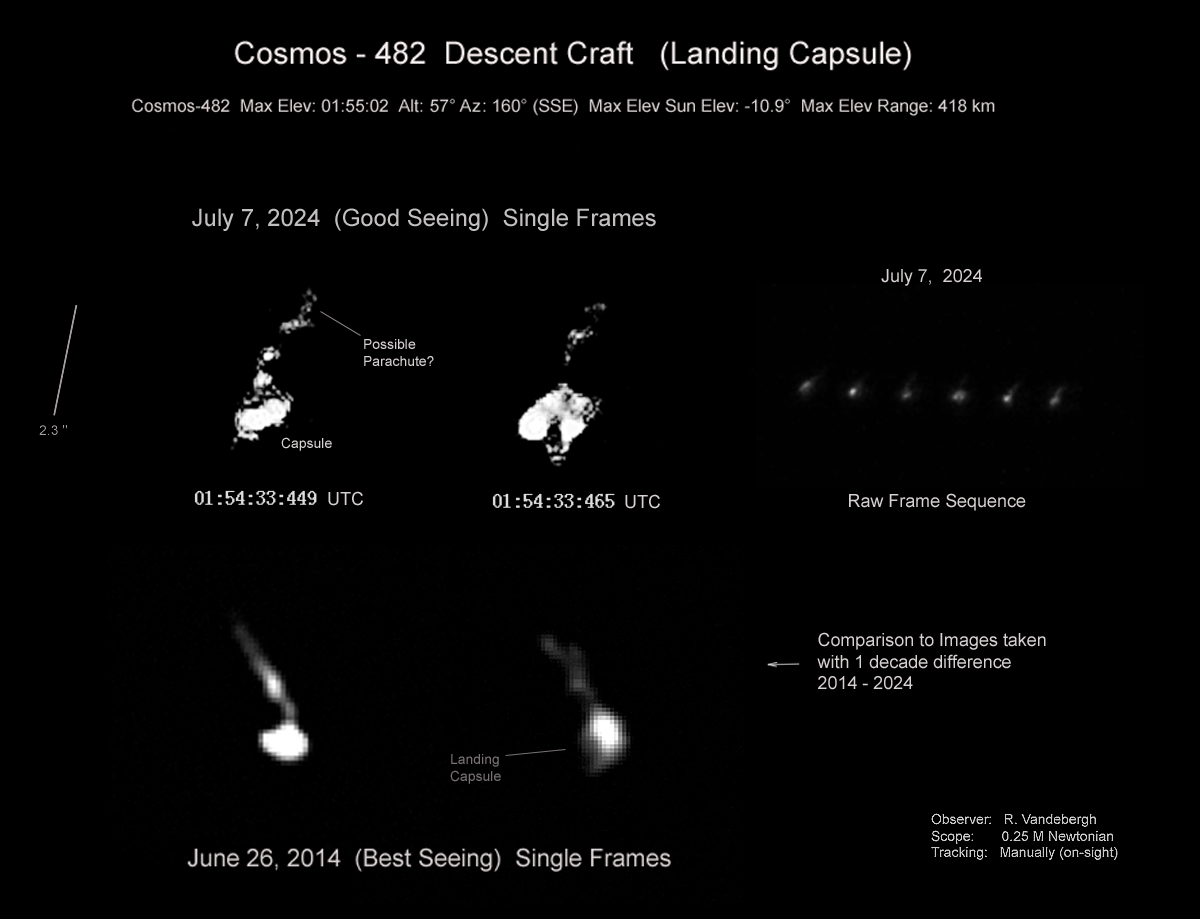Failed Soviet Venus probe Kosmos 482 is expected to fall to Earth tonight, but when and where? Here's what we know
It's still quite uncertain just where and when the craft will fall, although it is expected to reenter around 2:26 am ET on May 10 +/- 4.35 hours.

Update for 8:30 a.m. ET on May 10: Kosmos 482 has fallen harmlessly into the Indian Ocean west of Indonesia, according to according to Russia's space agency Roscosmos.
In 1972, the Soviet Union launched the Kosmos 482 lander, a spacecraft designed to reach Venus and land on its surface. The craft never reached Venus, however. The rocket that launched it suffered an anomaly, stranding the probe in an elliptical orbit around Earth where it has remained for over 50 years.
That five-decade stay in space could come to an end today. Kosmos 482 is expected to reenter Earth's atmosphere and possibly crash somewhere on the surface of the planet. The probe consists of a 3.3-foot-wide (1-meter-wide) titanium shell lined with thermal insulation, designed to withstand the heat of entry into Venus' atmosphere. The craft weighs about 1,190 pounds (495 kilograms).
It's still quite uncertain just where and when the craft will fall, although it is expected to reenter at 2:37 a.m. ET (0637 GMT) on May 10 +/- 3.28 hours, according to the European Space Agency. Based on current tracks and the dead probe's orbital inclination of 52 degrees, the craft's reentry could occur anywhere between 52 degrees north latitude and 52 degrees south — an area that covers most of Earth's surface.
However, the reentry of Kosmos 482 might not be as dangerous as other space junk falls. "As it will likely reach earth surface as only one single object, the risks involved are lower than for example those created by a Falcon 9 upper stage reentry, which showers multiple meter-sized objects over a large area," Dutch satellite tracker Marco Langbroek wrote in a blog post tracking the reentry of Kosmos 482.
But there's no need to fear being struck by the falling probe, according to CORDS. After all, 71% of Earth's surface is covered in water, and much of the land on the surface is unpopulated. The odds are that the probe will land somewhere harmless.
"While the risk is nonzero, any one individual on Earth is far likelier to be struck by lightning than to be injured by Cosmos 482," according to The Aerospace Corporation. "If it remains intact all the way to the surface, we project a risk of 0.4 in 10,000 — which falls well within the current safety threshold."
Breaking space news, the latest updates on rocket launches, skywatching events and more!
Satellite trackers and astronomers have been tracking Kosmos 482 for years. In 2019, there were reports that the craft might fall within a year, which didn't happen. Astrophotographer Ralf Vandebergh of the Netherlands has been capturing the probe on camera for over a decade, and recently captured imagery suggesting its parachute might be out while it circles Earth.

Some experts have cast doubt on that speculation, however. Langbroek writes that the 'tail'-like structure in Vandebergh's photos is likely the result of "camera/telescope shake and atmospheric distortion" instead of a parachute.
Kosmos 482 was part of the Soviet Union's historic Venera program of Venus exploration, which landed the first probe on the planet's surface in 1970 with the Venera 7 craft, and later sent back the first color pictures of Venus' surface in 1982 with the Venera 13 probe.
Stay up to date with the reentry of Kosmos 482 with ESA's live blog or Marco Langbroke's website SatTrackCam.

Brett is curious about emerging aerospace technologies, alternative launch concepts, military space developments and uncrewed aircraft systems. Brett's work has appeared on Scientific American, The War Zone, Popular Science, the History Channel, Science Discovery and more. Brett has degrees from Clemson University and the University of North Carolina at Charlotte. In his free time, Brett enjoys skywatching throughout the dark skies of the Appalachian mountains.
You must confirm your public display name before commenting
Please logout and then login again, you will then be prompted to enter your display name.
